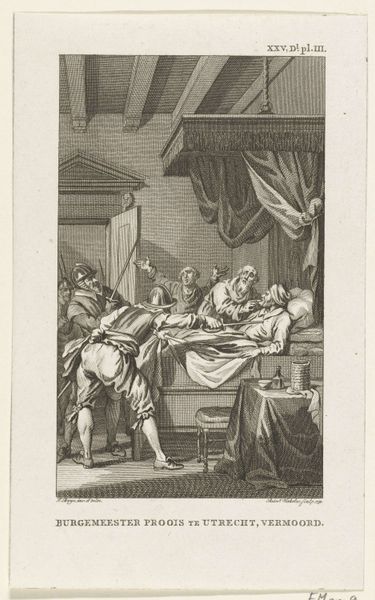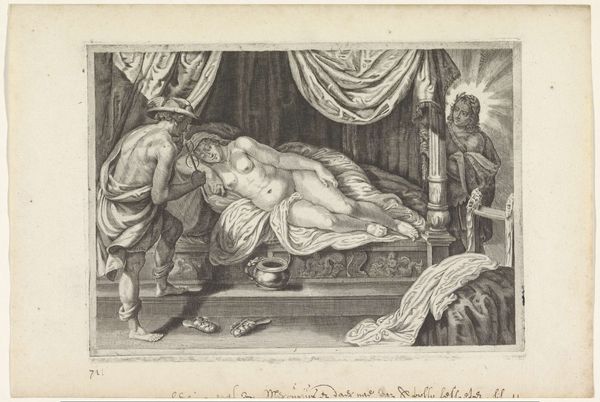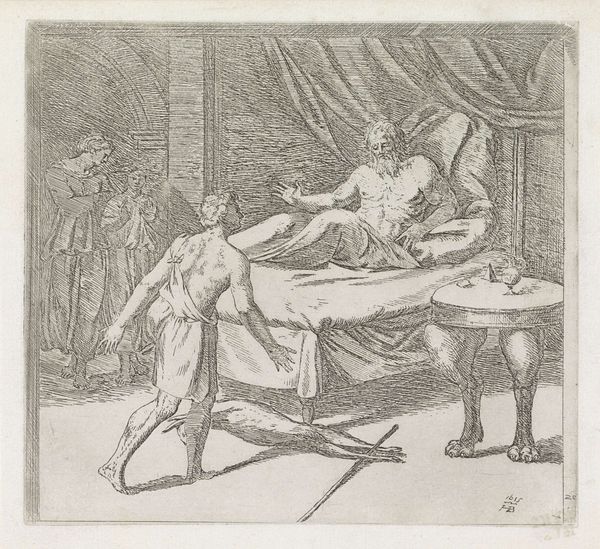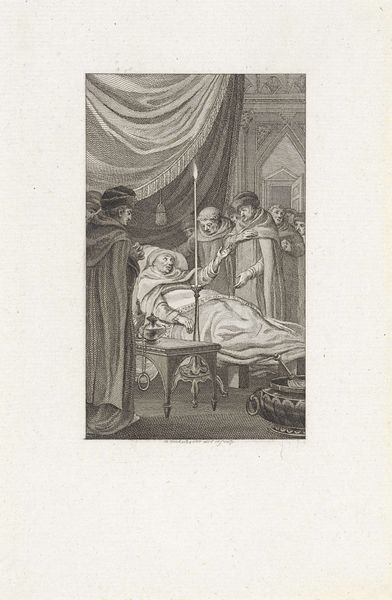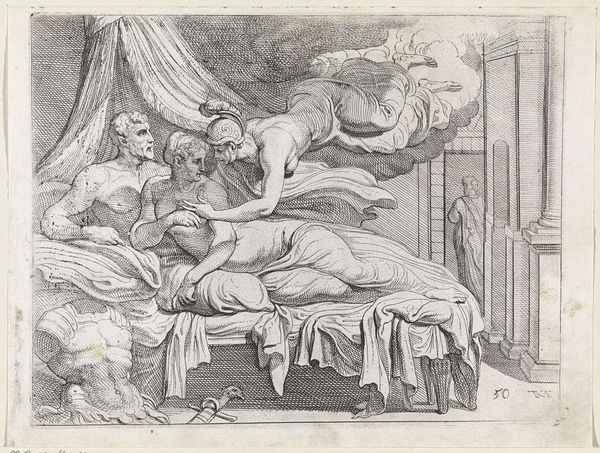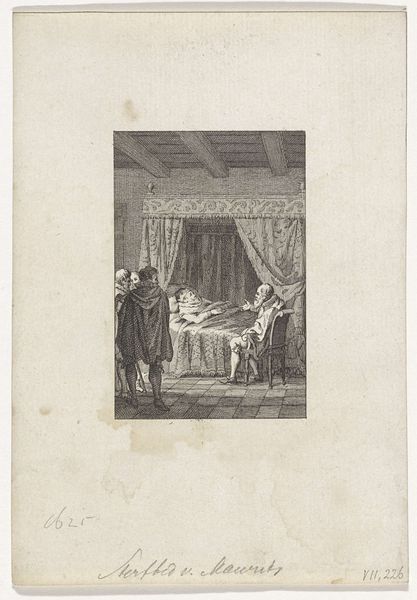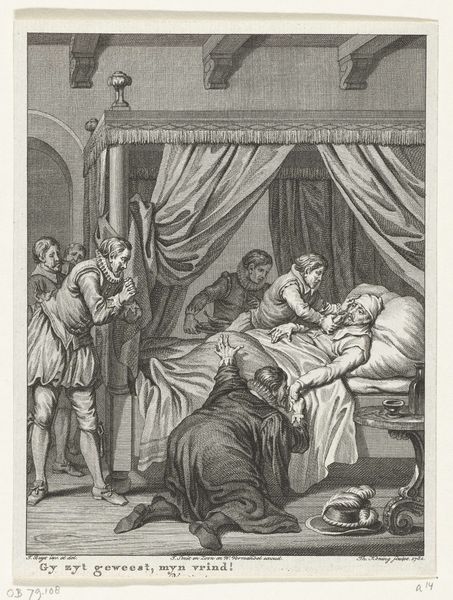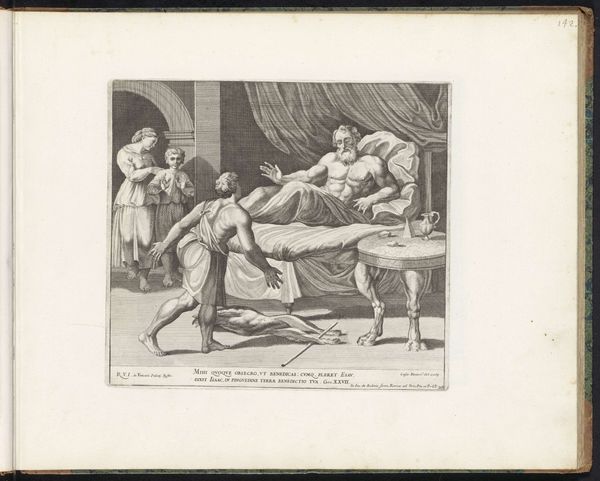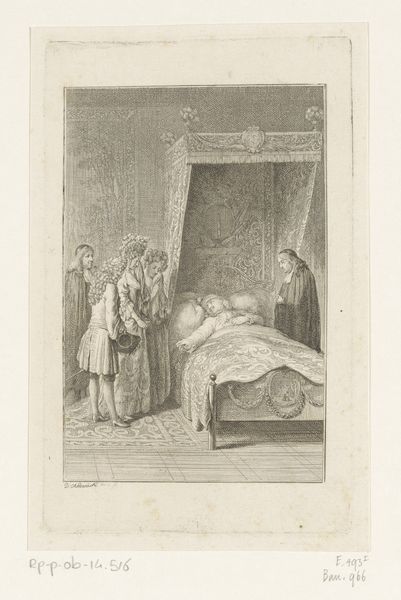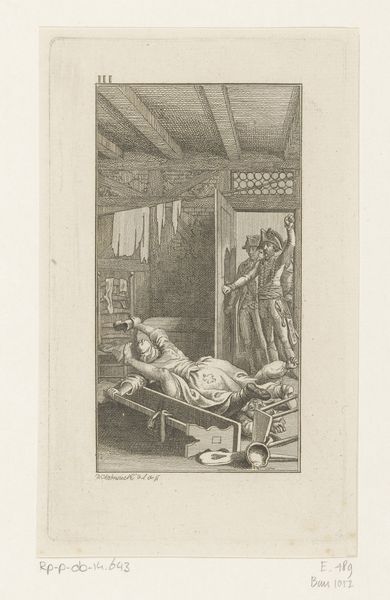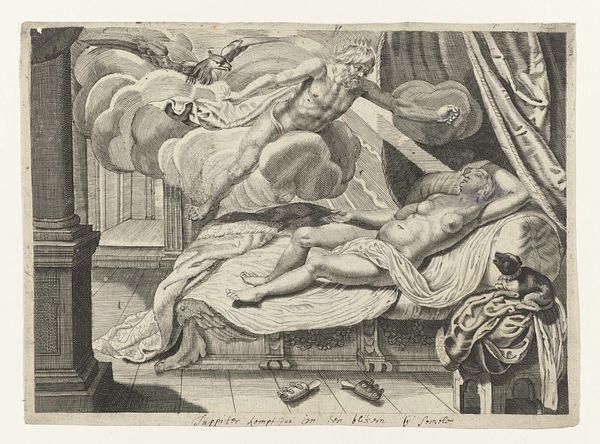
print, engraving
#
baroque
# print
#
figuration
#
history-painting
#
nude
#
engraving
Dimensions: height 75 mm, width 79 mm
Copyright: Rijks Museum: Open Domain
Curator: Looking at this piece, I am struck by the intricacy of the lines; the level of detail is quite impressive. The scene almost seems to leap from the square format with surprising perspective. Editor: It feels illicit somehow, doesn’t it? A furtive glimpse into a private space. There's an unease created by the contrast between the man's dynamic posture and the languid figures on the bed. Curator: Indeed. We are observing "Illustration for Boccaccio's Decameron" from 1697, engraved by Romeyn de Hooghe. Note the balanced light, which brings attention to certain textures of clothing. The tonal arrangement creates a compelling figure study. Editor: Interesting. De Hooghe was working within a complex social landscape. How did these themes resonate with the elite classes, who, I assume, were the target audience? Was it intended to be titillating or moralizing, or a bit of both, perhaps? Curator: It is important to examine De Hooghe's technical skill here. His deft handling of shadow conveys volume effectively, making each element palpable and vivid, down to the discarded slippers at the foot of the bed. Editor: Yes, and in that era, public perception of intimacy was tightly controlled. Art like this potentially acted as a safety valve. The story, removed from direct social critique, might have offered a space to consider sexuality within the rigid structures of their society. The gaze seems almost aggressive; an invasive power dynamic is happening here. Curator: Perhaps. What strikes me further is how De Hooghe manages to represent varying textures simply through line density. See how the silk of the sheets practically gleams, a tactile sensation translated visually. Editor: So, what are we seeing, essentially? It’s a glimpse into the lifestyle of elites but mediated through artistic interpretation and social constraints, revealing just as much about 17th-century mores as the depicted scene itself. Curator: Precisely. We've journeyed from an initial impression to considering this piece in its technical virtuosity and cultural encoding. Editor: Indeed, it seems this small engraving serves as a looking glass reflecting social practices in the late 17th Century.
Comments
No comments
Be the first to comment and join the conversation on the ultimate creative platform.
